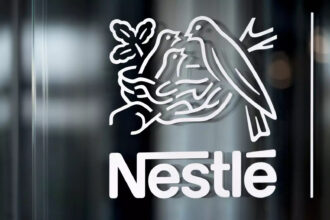In today’s interconnected world, the strength of a company’s supply chain can make or break its success. With global disruptions and evolving consumer expectations, businesses must take a strategic approach to risk management. However, while addressing risks is critical, equally important is aligning those efforts with quality management. In this blog, we’ll explore how balancing risk and quality management is key to achieving long-term business sustainability.
Why Supply Chain Risk Management Alone Isn’t Enough
The traditional approach to risk management often focuses on minimizing disruptions, whether they be from natural disasters, geopolitical events, or even supply chain delays. While these are important factors to consider, an exclusive focus on risk can lead to unforeseen consequences, such as compromised quality. When businesses place too much emphasis on minimizing risks, they might inadvertently sacrifice the standards that define their products or services.
Supply chain professionals must strike a balance between managing risks and upholding quality. This means that companies must not only protect against disruptions but also ensure that their products meet the necessary standards at every point of the supply chain. Inadequate attention to quality could lead to significant customer dissatisfaction, product recalls, or legal complications.
Aligning Quality and Risk for Optimal Performance
To effectively align quality and supply chain management, businesses should integrate risk management strategies with quality controls from the outset. By embedding quality assurance processes into every step of the supply chain, businesses can proactively identify risks that could compromise product quality.
For instance, supplier evaluations should go beyond financial stability and delivery timelines. They should also include assessing the quality practices of each supplier. Are they consistently meeting the required standards? Do they have the necessary certifications to ensure quality at scale? These factors help mitigate the risk of low-quality materials entering the production process.
In addition, adopting advanced technologies like AI and predictive analytics can help companies anticipate potential risks before they occur. With tools like real-time data monitoring, businesses can detect issues early on and take corrective actions to maintain both quality and operational integrity.
Building a Culture of Quality and Risk Awareness
To ensure that quality and risk management are aligned across the entire organization, businesses must build a culture of awareness and accountability. This means that every employee, from procurement to production to logistics, should understand the importance of both quality and risk mitigation.
Leaders should encourage cross-departmental collaboration, where teams share insights on potential risks and quality improvements. This open communication ensures that everyone is on the same page, working towards a common goal of ensuring smooth operations and high-quality outcomes.
Furthermore, training programs are essential. Employees should be equipped with the skills and knowledge necessary to recognize quality issues early and respond to potential risks effectively. When risk and quality management are seen as a shared responsibility, it becomes easier to maintain a smooth and resilient supply chain.
The Benefits of an Integrated Approach
The benefits of aligning quality and risk management are far-reaching. Not only does it help protect against unexpected disruptions, but it also strengthens customer trust and satisfaction. Customers are more likely to remain loyal to a company that consistently delivers high-quality products, even in the face of challenges.
Moreover, by proactively addressing risks and quality concerns, businesses can reduce costs associated with product recalls, litigation, and reputational damage. In the long run, this balanced approach leads to greater profitability and operational efficiency.
Conclusion
Balancing risk and quality in supply chain management isn’t just about surviving disruptions; it’s about thriving in an ever-evolving market. Businesses that effectively align these two areas are better positioned to deliver high-quality products, maintain customer satisfaction, and build a more resilient supply chain.
By integrating risk management with quality assurance processes, companies can reduce the likelihood of costly errors while ensuring that they continue to meet the ever-growing expectations of their customers.







